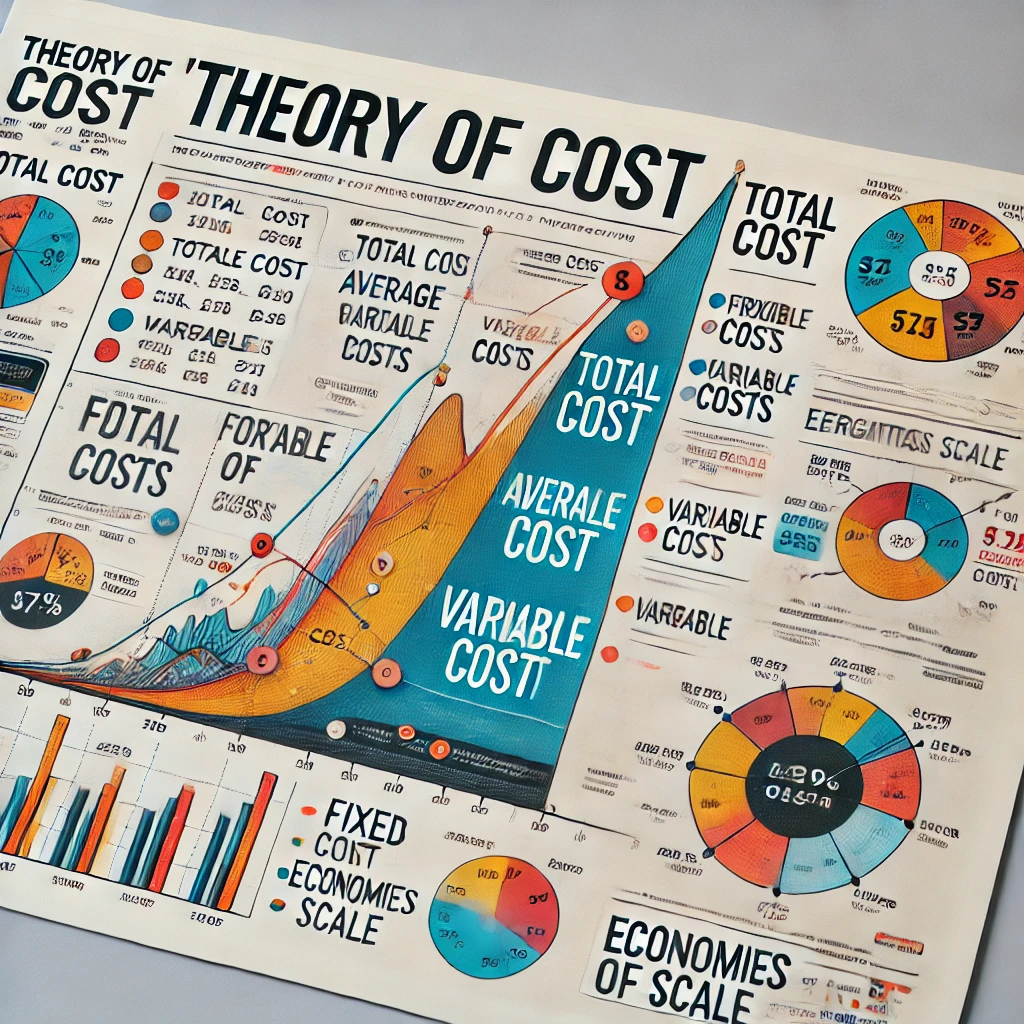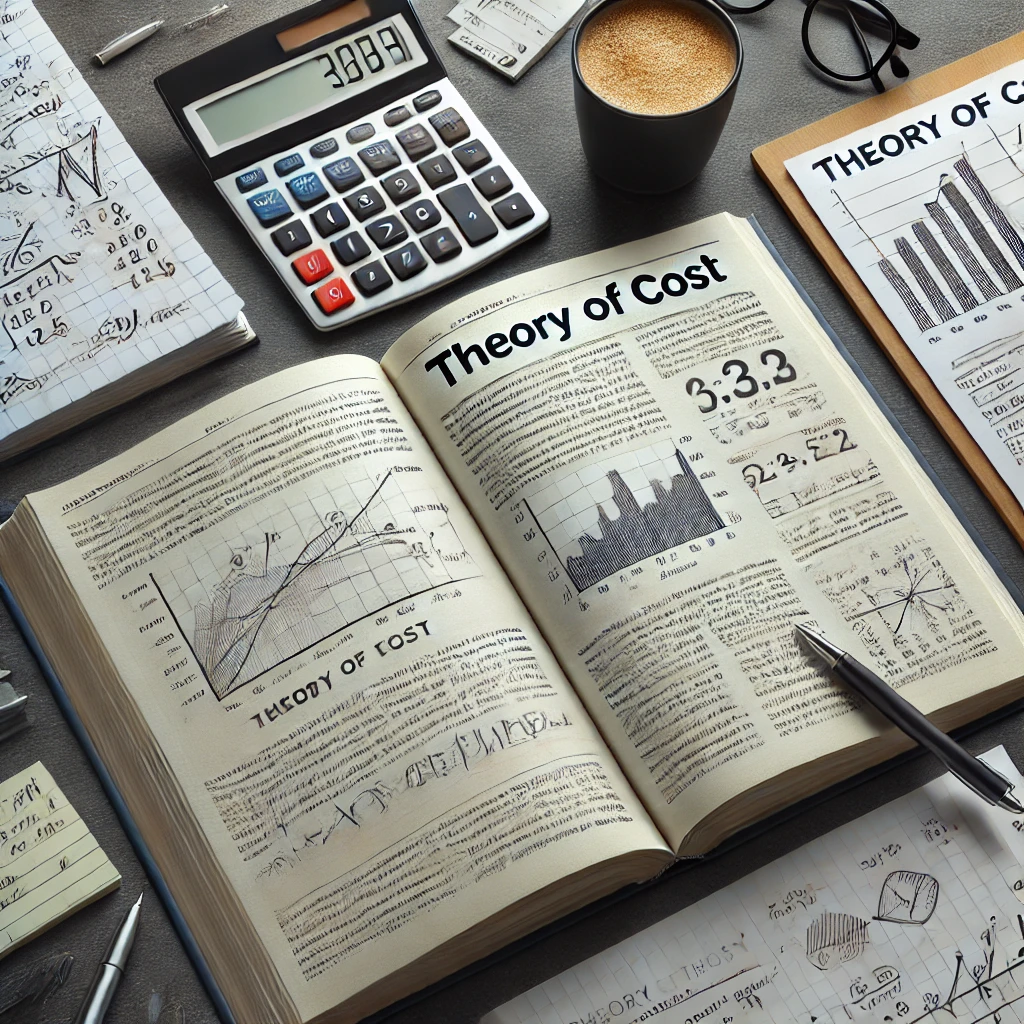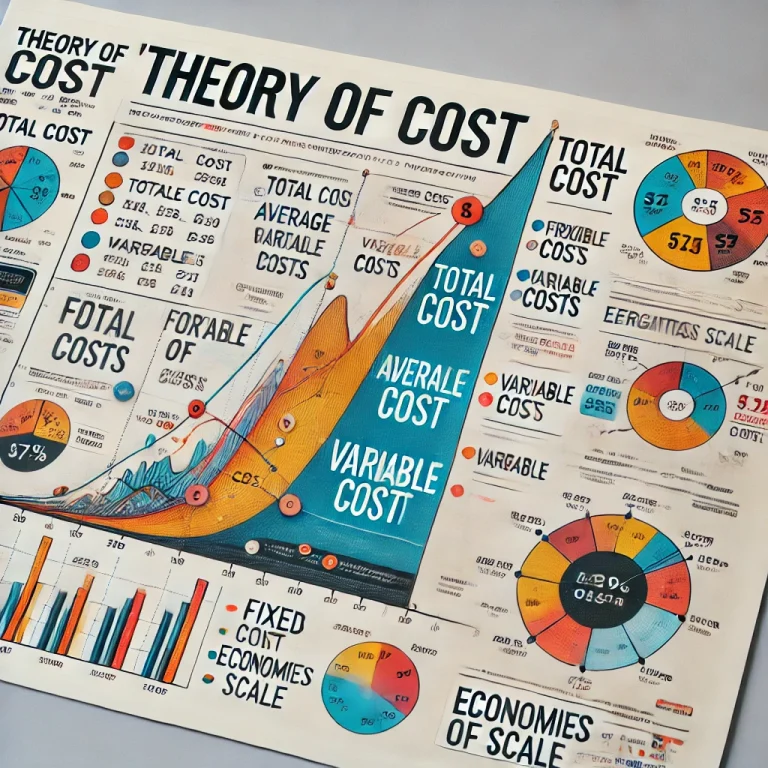Cost theory, being one of the prime concepts in both economics and finance, is the analysis of how costs vary when factors in production are varied. It makes decisions for the level that would be produced, the price level, and budgeting for businesses and individuals. Cost theory breaks down the fixed and variable components that add up to give the total cost of producing goods or services.
What is Theory of Cost?
The cost theory essentially means the study of how production costs vary according to the level of output produced by a firm in economics. It looks at how production costs vary with the scale of operations, the rates of inputs, and the efficiency with which any production process is carried out. Costs are determinants in forming business profitability and competitive position in the marketplace.
Costs are categorized into different types. They include fixed costs, which do not vary with the increases or decreases in the quantities of the output, variable costs that vary with the levels of production, and total costs, which are the sum of fixed and variable costs. There has to be an explanation of these concepts when analyzing the cost of production in both the short run and the long run.
Types of Theory of Cost
Several types of cost help in understanding how every type affects various decision-making processes involved in production:
- Fixed Costs: This is the type of cost incurred, which does not depend on the level of production, such as rent, salaries, and insurance.
- Variable Costs: Those costs that vary directly with the level of output, which may include raw materials, direct labor, and energy consumption.
- Total Costs: This includes the sum of both fixed and variable costs.
- Average Costs: Total Cost divided by Units of Production.
- Marginal Cost: Incrementally added cost of increasing one additional unit of output.
Example: If a factory produces an additional unit of a product and the cost of materials and labor for that unit is $50, then the marginal cost of that unit is $50.

Theory of Cost in Economics
Economics describes the theory of cost is pretty important to understand how firms determine how much they should produce to maximize their profit. Cost and output with determinants that affect the latter are related in the theory.
Key Concepts in Economic Cost Theory
- Opportunity Cost: The value of the next best alternative that is given up with a decision made.
- Explicit and Implicit Costs: Explicit costs involve direct payments, whereas implicit costs relate to what resources used would have been able to do elsewhere, in other words, the opportunity cost of using resources
- Cost Functions: These mathematical functions portray the relationship between the cost of production and the level of output.
Economic Insight: In economics, the short-run and long-run cost functions differ due to the variability of inputs. In the short run, at least one input is fixed, while in the long run, all inputs can be adjusted to achieve the desired output.
Modern Theory of Cost
The advanced analytical techniques and current data help modern cost theory to explain the cost behavior with greater precision. This is quite unlike the case with earlier theories since the current cost analysis makes allowances for dynamic factors such as economies of scale, scope, and the learning curve.
- Economies of Scale: When the firm enlarges its volume of production, it leads to a decrease in per-unit costs.
Diseconomies of Scale: When the firm grows too large to be inefficient, there emerges an increase in per-unit costs. - Economies of Scope: Cost advantages derived from producing multiple outputs compared to a single output.
- Learning Curve Effect: The cost advantages gained from increased productivity based on the experience as workers learn to perform tasks.
Application: Modern theory focuses on minimizing costs and maximizing output by analyzing these dynamic factors, leading to more effective production strategies.

Traditional Theory of Cost
The traditional theory focuses on cost behavior in short-run and long-run scenarios on the basis of historical data. The traditional theory of cost is all about focusing on fixed and variable cost concepts and how they add up to total cost.
- Short Run Cost Analysis: In the short run, due to variable inputs, a firm can increase or decrease its levels of production while having at least one input as fixed.
- Long-run Cost Analysis: All factors of production can be altered in the long run, therefore making it possible for firms to achieve optimal levels of production efficiency.
Cost Curves in Traditional Theory:
- Total Cost (TC): Represents the overall expense of production.
- Average Cost (AC): The cost per unit of production.
- Marginal Cost (MC): Indicates the change in total cost when one additional unit is produced.
Analysis: Traditional theory often uses these cost curves to determine the most efficient production level and to identify the points of economies and diseconomies of scale.
Difference Between Short Run and Long Run Costs
Understanding the difference between short-run and long-run costs is essential for firms in making production and investment decisions.
| Aspect | Short Run Costs | Long Run Costs |
|---|---|---|
| Definition | Costs when one or more inputs are fixed | Costs when all inputs are variable |
| Flexibility | Limited flexibility in input adjustment | Complete flexibility in input usage |
| Cost Behavior | Focuses on variable costs and fixed costs | Focuses on minimizing average costs |
| Production Decisions | Decisions based on current capacity | Decisions based on capacity expansion |
Example: In the short run, a bakery may only be able to adjust the number of workers but not the size of the oven. In the long run, it can invest in a larger oven to increase production.
Conclusion
Theory of cost” – a modern as well as an ancient tool for use in analyzing business strategies, as well as economists’ understanding of how costs behave for various production scenarios. This enables management to make better strategic decisions, which ultimately end up with increased efficiency and profitability. The modern scientific study of cost is dynamic and more and more data-based.
Theory of Cost FAQs
What is the theory of cost?
The theory of cost explores how different types of costs are influenced by production levels, helping firms make efficient production and pricing decisions.
What are the types of costs in the theory of cost?
Types of costs include fixed costs, variable costs, total costs, average costs, and marginal costs.
How does modern theory of cost differ from traditional theory?
Modern theory of cost focuses on dynamic factors like economies of scale and learning curves, while traditional theory relies on fixed and variable cost concepts.
What is the difference between short-run and long-run costs?
Short-run costs involve at least one fixed input, while long-run costs assume all inputs are variable, allowing for greater production flexibility.
Why is understanding the theory of cost important in economics?
Understanding the theory of cost is essential for optimizing production efficiency, setting competitive prices, and making informed business decisions.


